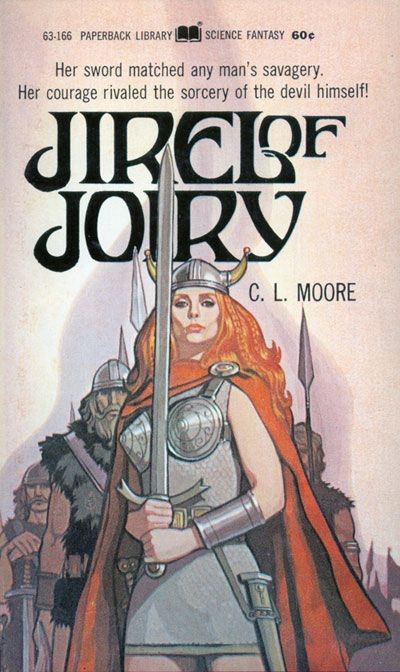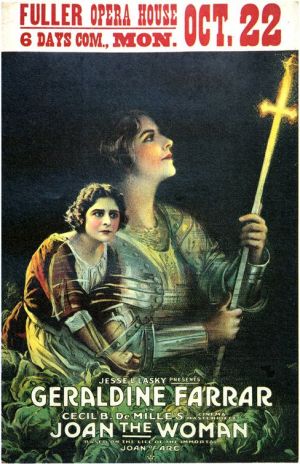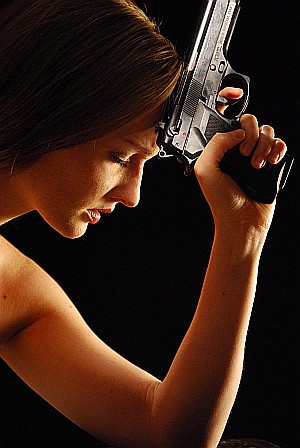★★½
“As therapy, beats ice-cream and a copy of The Notebook.”
 Painfully shy doctor’s assistant Julia (Williams) is drugged and raped by a group of young men, but is too traumatized to report the crime to the authorities. Sitting alone in a corner of a bar one night, she overhears another woman, Sadie (Tozzi), talking about a radical therapy regime, that allows women to reclaim their self-esteem and power. Eventually talking Sadie into referring her to Doctor Sgundud (Noseworthy) who, after discovering Julia is a suitable case for treatment, allows Sadie to mentor Julia in the system. This involves seducing men, and then punishing them for their lechery. However, Sgundud’s therapy comes with strict rules against taking personal action against those who abused you: rejoicing in her new=found power, Julia is not so keen on abiding by such apparently arbitrary restrictions, especially coming from a mere man. But the doctor wasn’t kidding, when he warned her of the severe consequences for not following the rules.
Painfully shy doctor’s assistant Julia (Williams) is drugged and raped by a group of young men, but is too traumatized to report the crime to the authorities. Sitting alone in a corner of a bar one night, she overhears another woman, Sadie (Tozzi), talking about a radical therapy regime, that allows women to reclaim their self-esteem and power. Eventually talking Sadie into referring her to Doctor Sgundud (Noseworthy) who, after discovering Julia is a suitable case for treatment, allows Sadie to mentor Julia in the system. This involves seducing men, and then punishing them for their lechery. However, Sgundud’s therapy comes with strict rules against taking personal action against those who abused you: rejoicing in her new=found power, Julia is not so keen on abiding by such apparently arbitrary restrictions, especially coming from a mere man. But the doctor wasn’t kidding, when he warned her of the severe consequences for not following the rules.
Initially intriguing, the film becomes more problematic as it goes on, both morally and cinematically. By “flirty fishing” for men who have done little if anything wrong, and then punishing them, Julia has moved from abused to abuser, and the movie doesn’t succeed in bringing the audience over the line with her, and any sympathy for her is largely lost as a result, well before she ever gets round to confronting those actually responsible for the attack. Nor does the film appear to know what to do once it gets there, suddenly shifting focus so that Dr. Sgundud becomes the Big Bad, though we know little about him or his background, beyond that he seems to enjoy manipulating the easily manipulated. On the plus side, the film looks luscious, depicting a New York saturated in neon and rain, like some kind of nightmarish car commercial. As the lead, Williams (previously seen on all fours in the first part of Human Centipede) is solid enough in terms of her transformation from self-harming wallflower into avenging succubus.
However, she doesn’t bring enough personality to the role to make it memorable. Compare and contrast, say, the similarly-themed (and equally problematic, in different ways) American Mary, in which Katherine Isabelle had a far greater impact. Or Nurse 3D – also with a medical professional character – where Paz de la Huerta went over the top, dragging the viewer with her – kicking and screaming if necessary. Campbell appears to be aiming for low-key, yet ends up closer to flat-line, and I found myself tuning out in the second half as a result. While even-handed in its depiction of the sexual violence, with one scene certainly likely to have male viewers crossing their legs, there’s otherwise just not enough impact. When you’re going down a well-worn path, you either need to travel it extremely well, or take an interesting diversion, and sadly, this does neither.
Dir: Matthew A. Brown
Star: Ashley C. Williams, Tahyna Tozzi, Jack Noseworthy, Joel de la Fuente






 Originally published in the pulp magazine Weird Tales in the late 1930s, Moore’s five stories featuring beautiful swordswoman Jirel, lady ruler of a feudal fiefdom in medieval France, were as germinal in the development of sword-and-sorcery fantasy as the work of her contemporary, Robert E. Howard. Jirel is a strong and complex character, the first in prose fantasy’s long and honorable list of butt-kicking heroines; tough but not brutal, proud and hot-tempered, but possessing a gentle side, too. Like most people in her time, she’s a loyal daughter of the Church –but she’s not especially religious and wouldn’t make any claims to sainthood! Though she’s a veteran fighter of conventional battles, these stories involve her mostly in adventures of another sort, confrontations with dark sorcery, usually in otherworldly, extra-dimensional realms.
Originally published in the pulp magazine Weird Tales in the late 1930s, Moore’s five stories featuring beautiful swordswoman Jirel, lady ruler of a feudal fiefdom in medieval France, were as germinal in the development of sword-and-sorcery fantasy as the work of her contemporary, Robert E. Howard. Jirel is a strong and complex character, the first in prose fantasy’s long and honorable list of butt-kicking heroines; tough but not brutal, proud and hot-tempered, but possessing a gentle side, too. Like most people in her time, she’s a loyal daughter of the Church –but she’s not especially religious and wouldn’t make any claims to sainthood! Though she’s a veteran fighter of conventional battles, these stories involve her mostly in adventures of another sort, confrontations with dark sorcery, usually in otherworldly, extra-dimensional realms. This grindhouse obscurity manages to rise above the limitations of its budget, and proves an effectively nasty piece of work. The titular teenage “heroine” (Carpenter) is on the way to see her older lover, but embarks as well on a killing spree that first includes a classmate and the guy who picks them up, then a householder (Michael Findlay) whose swimming pool Janie hijacks, before moving onto a predatory lesbian and finally her lover’s girlfriend (Roberta Findlay), whom she strangles with a belt. This is all told in flashback as she tells the story to her disbelieving bedmate – though the corpse he discovers in the bath-tub rapidly changes his mind. Oh, and did I forget to mention, for extra sleaze points, he is also Janie’s daddy? Damn. All of her exploits are accompanied by narration from what could be seen as an ancestor of Dexter’s “dark passenger”, exhorting Janie to further murderous acts, in a placid and matter-of-fact tone that is actually all the more chilling for its calmness.
This grindhouse obscurity manages to rise above the limitations of its budget, and proves an effectively nasty piece of work. The titular teenage “heroine” (Carpenter) is on the way to see her older lover, but embarks as well on a killing spree that first includes a classmate and the guy who picks them up, then a householder (Michael Findlay) whose swimming pool Janie hijacks, before moving onto a predatory lesbian and finally her lover’s girlfriend (Roberta Findlay), whom she strangles with a belt. This is all told in flashback as she tells the story to her disbelieving bedmate – though the corpse he discovers in the bath-tub rapidly changes his mind. Oh, and did I forget to mention, for extra sleaze points, he is also Janie’s daddy? Damn. All of her exploits are accompanied by narration from what could be seen as an ancestor of Dexter’s “dark passenger”, exhorting Janie to further murderous acts, in a placid and matter-of-fact tone that is actually all the more chilling for its calmness. This film’s origins as a stage play are painfully apparent, and you can also see why the distributor’s felt it needed to have 45 minutes cut out before it could be released, as frankly, it’s a bit of a bore. The battle to recapture Orleans is the only action of note here, even though that represented the start of the Maid’s campaign to restore France to its proper ruler (Ferrer), rather than the end. After that, this more or less skips forward to his coronation, then Joan’s capture, spending the rest of the movie – and there’s a lot of it – going through the trial, and the railroading of the heroine into, first throwing herself on the church’s mercy, then recanting her recantation and returning to wearing men’s clothes, thereby sealing her fate. There’s not much here which you won’t have seen before, if you’ve seen any of the other versions of the story, touching the usual bases from Joan’s revelations that she’s going to be the saviour of France, through her trip to see the Dauphin, and so on. It does downplay the “voices” aspect, especially early on, perhaps a wise move since it’s difficult to depict, without making her seem like a religious fruitcake.
This film’s origins as a stage play are painfully apparent, and you can also see why the distributor’s felt it needed to have 45 minutes cut out before it could be released, as frankly, it’s a bit of a bore. The battle to recapture Orleans is the only action of note here, even though that represented the start of the Maid’s campaign to restore France to its proper ruler (Ferrer), rather than the end. After that, this more or less skips forward to his coronation, then Joan’s capture, spending the rest of the movie – and there’s a lot of it – going through the trial, and the railroading of the heroine into, first throwing herself on the church’s mercy, then recanting her recantation and returning to wearing men’s clothes, thereby sealing her fate. There’s not much here which you won’t have seen before, if you’ve seen any of the other versions of the story, touching the usual bases from Joan’s revelations that she’s going to be the saviour of France, through her trip to see the Dauphin, and so on. It does downplay the “voices” aspect, especially early on, perhaps a wise move since it’s difficult to depict, without making her seem like a religious fruitcake. I don’t watch many silent films: it’s such an entirely different experience, obviously, much less driven by dialogue and more by gestures, leading to a style that can look extremely over-theatrical to the modern viewer. My efforts to enjoy the likes of Nosferatu, for example, have usually ended in my providing an accompaniment of snoring, to be honest. This was much better. Despite a running time of over two hours, this 1916 DeMille epic successfully held my interest, as it told the story of Joan of Arc. The framing device uses the then-contemporary World War I, and an English soldier (Reid) finds Joan’s sword in the trenches, the night before a dangerous mission [Interesting how the English are the enemy in the back-story, but the good guys “now” – at the time of release, America was still several months from entering the war, on the British side]. He then experiences a flashback vision, taking him to medieval France, where he is an English soldier saved by Joan (Farrar) in her milkmaid days. We follow her for the story you know, becoming the inspiration for the French army to defeat the English, before her capture, trial for heresy and – I trust I’m not spoiling this – burning at the stake.
I don’t watch many silent films: it’s such an entirely different experience, obviously, much less driven by dialogue and more by gestures, leading to a style that can look extremely over-theatrical to the modern viewer. My efforts to enjoy the likes of Nosferatu, for example, have usually ended in my providing an accompaniment of snoring, to be honest. This was much better. Despite a running time of over two hours, this 1916 DeMille epic successfully held my interest, as it told the story of Joan of Arc. The framing device uses the then-contemporary World War I, and an English soldier (Reid) finds Joan’s sword in the trenches, the night before a dangerous mission [Interesting how the English are the enemy in the back-story, but the good guys “now” – at the time of release, America was still several months from entering the war, on the British side]. He then experiences a flashback vision, taking him to medieval France, where he is an English soldier saved by Joan (Farrar) in her milkmaid days. We follow her for the story you know, becoming the inspiration for the French army to defeat the English, before her capture, trial for heresy and – I trust I’m not spoiling this – burning at the stake.
 Let’s start off by giving us a heroine who is dying, thanks to an inoperable brain tumour. Way to bring me down, Juncture: what do you think this is? DamesWithDiseases.com? The Hallmark channel is tha…oh, hang on. She’s following a child-porn purchaser back to his house, and guns him down? Hmmm. This is clearly not your everyday Illness of the Week flick. For Anna Carter (Blackport) has decided to go out with a bang: several of them, in fact. Realising she only has a short time to live, she decides to extend her day-job as the co-ordinator for a charitable foundation, and correct the failings of a justice system: neglectful mothers, drunk drivers, selfish CEOs, they’re all likely to meet impeccably-dressed vengeance.
Let’s start off by giving us a heroine who is dying, thanks to an inoperable brain tumour. Way to bring me down, Juncture: what do you think this is? DamesWithDiseases.com? The Hallmark channel is tha…oh, hang on. She’s following a child-porn purchaser back to his house, and guns him down? Hmmm. This is clearly not your everyday Illness of the Week flick. For Anna Carter (Blackport) has decided to go out with a bang: several of them, in fact. Realising she only has a short time to live, she decides to extend her day-job as the co-ordinator for a charitable foundation, and correct the failings of a justice system: neglectful mothers, drunk drivers, selfish CEOs, they’re all likely to meet impeccably-dressed vengeance. Still, there’s a great deal to admire here, with every penny being squeezed out of the budget. Particular kudos to cinematographer Richard Lerner and composer Neal Acree, whose efforts enhance proceedings significantly – the results look to be the product of a significantly-higher budget, than the rumoured million dollars. It leaves you questioning what you would do in the same situation: follow Queen Latifah off on a Last Holiday, or head for the dark side, as Anna does here, with a mission for what you perceive as the ‘greater good’? Certainly more thought-provoking than usual, it’s intended as the first part on a trilogy, though stands fairly well on its own, I would be very interested to see how things proceed from here, as Anna heads towards closure, both personal and medical.
Still, there’s a great deal to admire here, with every penny being squeezed out of the budget. Particular kudos to cinematographer Richard Lerner and composer Neal Acree, whose efforts enhance proceedings significantly – the results look to be the product of a significantly-higher budget, than the rumoured million dollars. It leaves you questioning what you would do in the same situation: follow Queen Latifah off on a Last Holiday, or head for the dark side, as Anna does here, with a mission for what you perceive as the ‘greater good’? Certainly more thought-provoking than usual, it’s intended as the first part on a trilogy, though stands fairly well on its own, I would be very interested to see how things proceed from here, as Anna heads towards closure, both personal and medical. If I ever become an assassin, I will never utter the words “last” and “job” to anyone – it’s just
If I ever become an assassin, I will never utter the words “last” and “job” to anyone – it’s just  Not seen part one? Never fear! Thanks to the magic of flashback, we see that Lilia Gallardo (Herrera) killed her husband, shot his son Pablo, and has now taken over their drug business. This is to the dismay of his men who, with typically Mexican machismo, feel a woman is unsuited to the role, and also Pablo, who is not dead, but is now recuperating on a nearby ranch, waiting his opportunity for revenge.
Not seen part one? Never fear! Thanks to the magic of flashback, we see that Lilia Gallardo (Herrera) killed her husband, shot his son Pablo, and has now taken over their drug business. This is to the dismay of his men who, with typically Mexican machismo, feel a woman is unsuited to the role, and also Pablo, who is not dead, but is now recuperating on a nearby ranch, waiting his opportunity for revenge.
 However, the main difference between this and The Messenger is that Joan of Arc is convincing. Perhaps with the advantage of having extra time (the DVD of the miniseries runs 189 minutes), they make the effort to show her interacting with other characters, and Sobieski’s calm, complete assurance is a striking contrast to Jovovich. The viewer can see why people would believe her, and it naturally follows they will too – Sobieski’s Emmy nomination was entirely well-deserved. Despite playing fast and loose with the facts (another example: Joan’s brother was not killed in battle, but lived to see her trial verdict overturned), this strong central performance holds the film together and, with the aid of the other fine actors, makes it eminently watchable. It may not be historically accurate, but it does a fine job of explaining why her myth is still honoured in the third millennium, without coming down in one camp or the other regarding the source of her visions. There are few TV miniseries worth watching, and fewer still worth owning, but this one comes highly recommended.
However, the main difference between this and The Messenger is that Joan of Arc is convincing. Perhaps with the advantage of having extra time (the DVD of the miniseries runs 189 minutes), they make the effort to show her interacting with other characters, and Sobieski’s calm, complete assurance is a striking contrast to Jovovich. The viewer can see why people would believe her, and it naturally follows they will too – Sobieski’s Emmy nomination was entirely well-deserved. Despite playing fast and loose with the facts (another example: Joan’s brother was not killed in battle, but lived to see her trial verdict overturned), this strong central performance holds the film together and, with the aid of the other fine actors, makes it eminently watchable. It may not be historically accurate, but it does a fine job of explaining why her myth is still honoured in the third millennium, without coming down in one camp or the other regarding the source of her visions. There are few TV miniseries worth watching, and fewer still worth owning, but this one comes highly recommended.